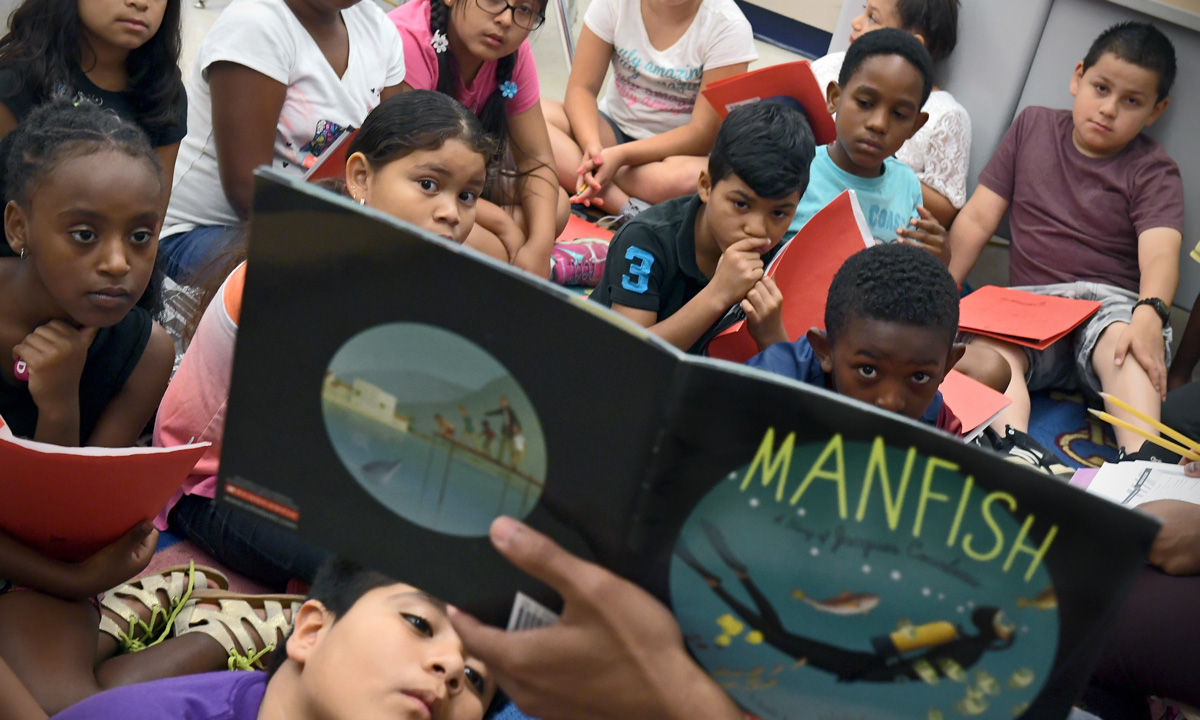Out-of-School Programs Play an Outsized Role in Child Development
After school and summer programs can enhance academic motivation and increase school attendance, but face access, funding and workforce challenges.

Get stories like this delivered straight to your inbox. Sign up for The 74 Newsletter
What if one of the most crucial experiences for the development of school-aged children doesn’t happen during the school day at all? What if it has little to do with learning to read, sharpening math skills or navigating the cafeteria’s social scene? What if, when the bells rings at the end of the day, the real growth begins?
Out-of-school programs — enrichment programs that occur after school or during the summer — offer structured environments where students engage in meaningful activities, build relationships and develop essential life skills. They often serve as a bridge between school, home and the community, and for kids from low-income families, high-quality out-of-school programs can play an outsized role in their development.
“This idea that society should put all development and learning into this institution called school is problematic. In today’s world it doesn’t make sense,” says Tom Akiva, professor at the University of Pittsburgh whose research focuses on out-of-school learning. “The school setting has many of the standard areas we think of as learning: science, math, reading. But a lot of important learning happens in out-of-school time. Things like social skills, leadership, and a lot of interest development.”
A new report from the National Academies of Sciences, Engineering and Medicine examines the impact and effectiveness of these programs, offering the major take-away that they’re far more important than policymakers and parents likely realize. Yet gaps in access, funding limitations in the current political climate and workforce challenges hinder their potential impact.
“Eighty percent of waking hours are spent in informal learning, or out-of-school learning,” says Akiva, who helped author the report. “From a developmental psychology perspective, you’re learning in every environment you’re in. So lots of really important life learning happens outside.”
The 347-page report is the first comprehensive examination of out-of-school programs in more than two decades, and comes at a moment when the ecosystem is more diverse in its offerings than ever. These range from play-based experiences for younger students that boost social skills, imagination and creativity — and operate more like child care than anything — to more specialized experiences for older students, like a chess club, karate program or pottery class. Sports and theater programs offer important opportunities for team-building, while academic enrichment programs can help students who are behind catch up.
Research shows that well-designed, high-quality programs enhance academic motivation and increase school attendance, effectively promoting long-term educational success. And while it’s no wonder that tens of millions of families are eager to enroll their children, many are locked out.
In 2020, 24.6 million children wanted to enroll in out-of-school programs but ran headfirst into roadblocks such as high costs and transportation challenges, the latest available data show. A whopping 11 million children from low-income families were unable to participate in out-of-school programs, perhaps unsurprisingly suggesting barriers to access are not evenly distributed.
“For a lot of kids from affluent backgrounds, it’s kind of just an understood opportunity,” says Deborah Moroney, vice president of American Institutes for Research and chair of the National Academies committee that oversaw the research and production of the report. “But there’s a real opportunity gap for young people who come from marginalized communities and identities in terms of inclusion. There is a supply of out-of-school time opportunities that are subsidized or offered at a reduced cost, but it is not meeting the demand for the young people who can’t otherwise pay.”
Much of that is due to a fractured funding system, which has improved and grown significantly compared to two decades ago, but remains poorly coordinated and unreliable and has not kept pace with the growth in demand. The report goes so far as to call the existence of out-of-school programs “precarious,” noting that they exist “at the whim of one foundation board meeting or election.”
“The field has evolved, the funding has increased and things have formalized in terms of quality and experiences that participants have access to, but it’s still not meeting the demand,” Moroney says. “Funding stability still isn’t there, and that’s causing major problems for the organizers.”
As it stands, the main federal funding stream for out-of-school programs is the $1.3 billion 21st Century Community Learning Centers grants — though it’s unclear whether that funding will exist in the coming years as the Trump administration pursues funding cuts and consolidating existing programs into flexible block grants. Other than California’s long-standing matching grant to fund programs for its residents, only a handful of other states invest significantly, including Florida, Michigan and Pennsylvania.
Underscoring just how fragile many of these programs are, the U.S. Education Department’s decision to halt pandemic aid reimbursement extensions is already hitting summer and afterschool programs. The Maryland Out of School Time Network estimates that Baltimore will lose roughly 12,000 seats for summer opportunities this year as a result.
The report recommends that the out-of-school programs be coordinated centrally and woven into the nation’s safety net, instead of its piecemeal state of affairs — a proposal that seems unlikely given the current fiscal environment.
To be sure, the financing of the system is also tethered to the competency and quality of the workforce, which, much like the child care sector, is beset by a host of challenges: low wages, high turnover, job-related stress and no real cohesion or organization of the profession.
“This is a workforce that historically has come from the communities in which they’re serving,” says Moroney. “They have a great passion for the work, but it’s an unrecognized workforce. They are, traditionally, a low-wage workforce. They want to stay in the field, but there’s not the same kind of career pipelines and trajectories that there might be in some other fields.”
Given that the workforce plays an outsized role in the effective operation of out-of-school programs, Moroney says that it’s imperative for states and districts to figure out ways to elevate it, including how to recruit and retain workers. The report concludes that professional development, competitive salaries and career pathways can enhance workforce stability and improve program quality — though, again, policy experts say it’s difficult in the current fiscal environment, to imagine a scenario where those are priorities.
“I think if we were to invest in the workforce, we would see changes throughout the education ecosystem,” agrees Akiva. “If we figure out how to support this workforce better — because they’re really doing important, invisible work in society — then I think we would see positive change radiating out.”
Get stories like these delivered straight to your inbox. Sign up for The 74 Newsletter

;)